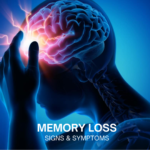Understanding Low Blood Pressure: Causes, Symptoms, and Treatments
Low blood pressure, medically known as hypotension, is a condition where blood pressure levels fall below the normal range. While high blood pressure (hypertension) garners significant attention due to its association with heart disease and stroke, hypotension can also pose health risks and affect daily living. This article aims to provide a comprehensive understanding of low blood pressure, including its causes, symptoms, potential complications, and available treatments.
What is Low Blood Pressure?
Blood pressure is the force exerted by circulating blood on the walls of blood vessels. It is measured in millimeters of mercury (mmHg) and recorded as two numbers: systolic pressure (the pressure during heartbeats) over diastolic pressure (the pressure between heartbeats). A normal blood pressure reading is generally around 120/80 mmHg. Hypotension is typically defined as blood pressure readings below 90/60 mmHg.
Causes of Low Blood Pressure
1. Dehydration
- When the body loses more water than it takes in, it can lead to dehydration, which decreases blood volume and causes a drop in blood pressure. Common causes of dehydration include excessive sweating, fever, vomiting, and diarrhea.
2. Heart Problems
- Certain heart conditions, such as bradycardia (slow heart rate), heart valve problems, heart attack, and heart failure, can lead to low blood pressure by affecting the heart’s ability to pump blood effectively.
3. Endocrine Disorders
- Issues with the endocrine system, including adrenal insufficiency (Addison’s disease), hypothyroidism, and diabetes, can affect blood pressure. These conditions can disrupt the balance of hormones that regulate blood pressure and fluid balance.
4. Severe Infection (Septicemia)
- Severe infections can enter the bloodstream and lead to septicemia, a life-threatening condition that can cause a dramatic drop in blood pressure, known as septic shock.
5. Blood Loss
- Significant blood loss from injury or internal bleeding reduces the amount of blood in the body, leading to a drop in blood pressure.
6. Lack of Nutrients
- Deficiencies in essential nutrients, particularly vitamin B12 and folate, can prevent the body from producing enough red blood cells, leading to low blood pressure.
7. Medications
- Certain medications can cause low blood pressure, including diuretics, alpha and beta-blockers, ACE inhibitors, antidepressants, and Parkinson’s disease medications.
8. Pregnancy
- Blood pressure often decreases during pregnancy due to the expansion of the circulatory system to accommodate the developing fetus.
Symptoms of Low Blood Pressure
While some people with hypotension may not experience noticeable symptoms, others may exhibit signs that warrant medical attention. Common symptoms include:
- Dizziness or Lightheadedness
- Feeling faint or unsteady, especially upon standing up quickly.
- Fainting (Syncope)
- Sudden loss of consciousness due to a temporary reduction in blood flow to the brain.
- Blurred or Fading Vision
- Visual disturbances that may occur during periods of low blood pressure.
- Nausea
- Feeling sick or having the urge to vomit.
- Fatigue
- Unusual tiredness or lack of energy.
- Lack of Concentration
- Difficulty focusing or feeling mentally “foggy.”
- Cold, Clammy, Pale Skin
- The skin may appear pale, feel cold to the touch, or be covered in a light sweat.
Potential Complications
While low blood pressure is not always dangerous, severe hypotension can lead to serious complications, including:
- Falls and Injuries
- Dizziness and fainting can result in falls and physical injuries, particularly in older adults.
- Shock
- A severe drop in blood pressure can lead to shock, a life-threatening condition that requires immediate medical intervention.
- Organ Damage
- Prolonged periods of low blood pressure can deprive organs of adequate blood flow, potentially leading to organ damage.
Diagnosis of Low Blood Pressure
Diagnosing hypotension involves measuring blood pressure using a sphygmomanometer or a digital blood pressure monitor. Additional tests may be conducted to determine the underlying cause, including:
- Blood Tests
- To check for conditions such as diabetes, anemia, and thyroid issues.
- Electrocardiogram (ECG)
- To detect heart-related problems.
- Echocardiogram
- An ultrasound of the heart to examine its structure and function.
- Stress Test
- To observe how the heart performs under physical exertion.
- Tilt Table Test
- To evaluate how the body responds to changes in position and identify potential issues with the autonomic nervous system.
Treatment and Management
The treatment for low blood pressure depends on its cause and severity. Here are some strategies and treatments that can help manage hypotension:
1. Increasing Fluid Intake
- Drinking more water helps increase blood volume and prevent dehydration.
2. Salt Intake
- Increasing salt intake can help raise blood pressure, but it should be done under medical supervision to avoid excessive salt consumption.
3. Medication Adjustments
- Reviewing and adjusting medications with a healthcare provider can help identify and eliminate those contributing to low blood pressure.
4. Compression Stockings
- Wearing compression stockings can help improve blood flow and prevent blood from pooling in the legs.
5. Dietary Changes
- Eating smaller, more frequent meals and avoiding large carbohydrate-rich meals can help stabilize blood pressure.
6. Medications
- In some cases, medications such as fludrocortisone and midodrine may be prescribed to help raise blood pressure.
7. Lifestyle Changes
- Avoiding prolonged standing, rising slowly from a sitting or lying position, and elevating the head of the bed can help manage symptoms.
Conclusion
While low blood pressure is often less discussed than high blood pressure, it is an important aspect of cardiovascular health. Understanding the causes, symptoms, and treatments of hypotension can help individuals manage this condition effectively and improve their quality of life. If you experience symptoms of low blood pressure, it is essential to seek medical advice to determine the underlying cause and appropriate treatment. With the right approach, hypotension can be managed, allowing individuals to lead healthy and active lives.





